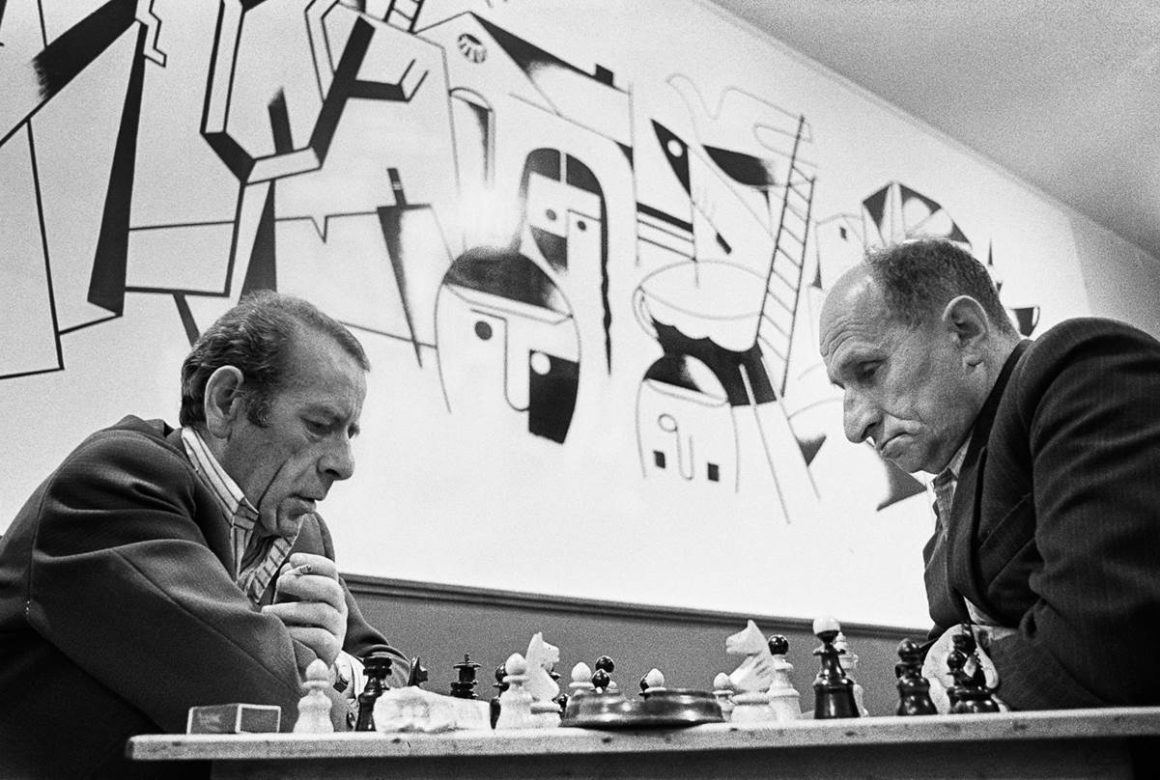
17 Sep Chuck Fishman: Roots, Resilience and Renewal—A Portrait of Polish Jews, 1975–2016
On view September 17, 2017–January 7, 2018
Click here to read the exhibition brochure text
Derfner Judaica Museum + The Art Collection at Hebrew Home at Riverdale, in conjunction with Jewish Studies at Fordham University, is pleased to announce its latest exhibition, Chuck Fishman: Roots, Resilience and Renewal—A Portrait of Polish Jews, 1975–2016, on view at the Derfner Judaica Museum from September 17, 2017–January 7, 2018.
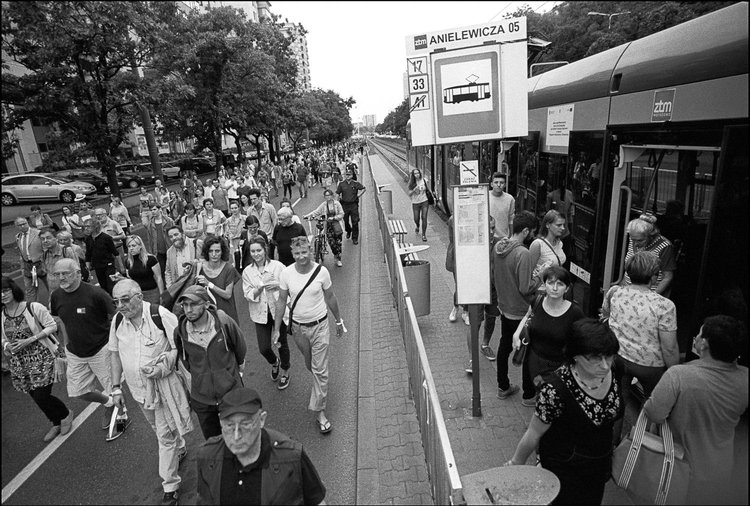
Chuck Fishman, Participants in the fifth annual March of Remembrance, commemorating the 74th anniversary of the first massive deportation to the extermination camp in Treblinka from the Warsaw Ghetto, passing the Anielewicza tram stop, named after Mordechai Anielewicz, the leader of the first armed action of the Warsaw Ghetto Uprising. Warsaw, 2016. © Chuck Fishman www.chuckfishman.com
The exhibition includes 36 black and white photographs made during multiple trips Fishman took to Poland over a period of more than 40 years, first as a young college student and later as a professional photojournalist. He first traveled to Poland in the summer of 1975 during the Communist era, accompanied by a writer, in search of what remained of Jewish life and culture in a country that Jews had inhabited for 1000 years, a once-vibrant community whose history and legacy lay on the brink of extinction.
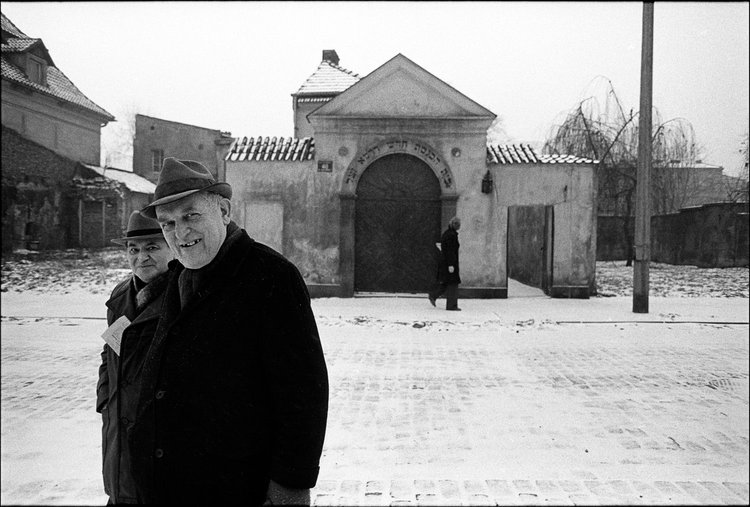
Chuck Fishman, Ludwik Berlinski (left) and Maurycy Jam (right) leaving the Remu Synagogue after the last Saturday service of 1978. Krakow, December 1978. © Chuck Fishman
What Fishman found were synagogues, locked, decaying and/or abandoned, and cemeteries in ruin; older Jews, living on pensions, by and large “underground” and with scant communal resources: the “kosher kitchens” in Warsaw, Krakow and Wroclaw; a Jewish club in Lodz; Friday night or Shabbat services in Warsaw and Krakow, and the Yiddish theater in Warsaw. That first journey resulted in the publication of Polish Jews: The Final Chapter (McGraw-Hill and New York University Press, 1977). Returning several times between 1975 and 1983, Fishman’s images provide rare glimpses into Jewish life during a period when Jews in the West had little or no access to their Polish forebears in the post-Holocaust era. His more recent images, made 30 years later upon his arrival in 2013—more than two decades after the fall of Communism—chronicle a spiritual and cultural “return to identity” that Fishman says, “would have been unthinkable before.” His latest work speaks “to themes of resilience and renewal, exploring and elucidating the myriad faces and facets of recovery and re-generation,” he explains, as younger generations are discovering their Jewish roots, and what it means “being Jewish.”
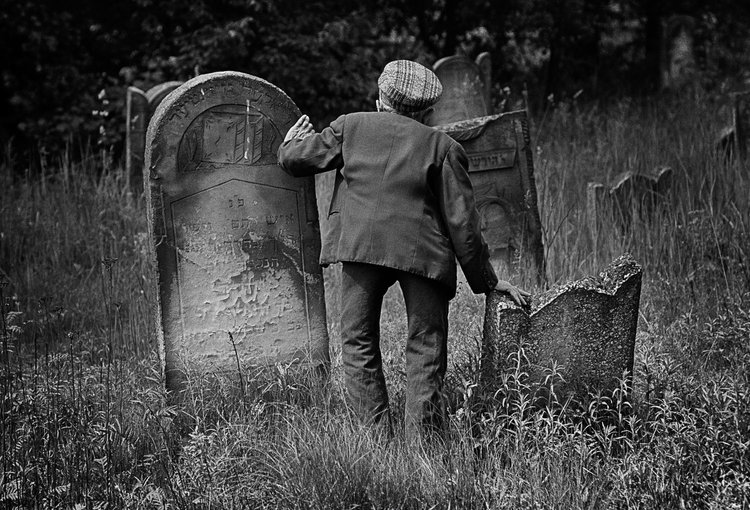
Chuck Fishman, Mosses Lekker, caretaker of the Jewish Cemetery. Lodz, 1975. © Chuck Fishman
Although color and digital printing is the medium of choice today, Fishman, in his recent and current work, continues to use black and white film as he had in the ‘70s and ‘80s, intentionally seeking a “cohesive, visual continuity throughout the images, and across the decades.” He both processes his own film and makes his own exhibition prints, and emphasizes that working with film—each of the original negatives—is of primal importance when crafting archival, gelatin silver photographic prints.
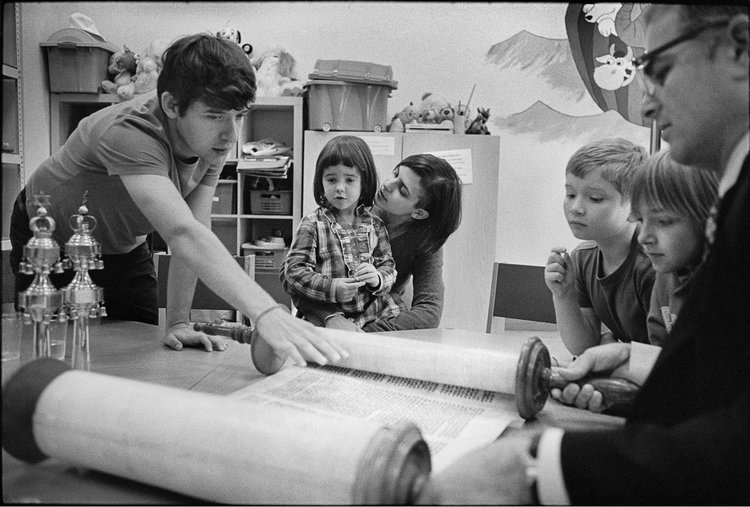
Jewish roots. Sept. 2013.Chuck Fishman, Newly-appointed American-Israeli Rabbi Avi Baumol (far right) introducing a Torah scroll to third- and fourth-generation post-Holocaust Jews. His first time teaching Sunday school at the Jewish Community Center (JCC). Krakow, 2013. © Chuck Fishman
About the artist
Chuck Fishman has focused on social and political issues with a strong humanistic concern. His work has been extensively published, exhibited and collected worldwide, and has earned him prestigious World Press Photo Foundation medals four times. His photographs have appeared on the covers of Time, Life, Fortune, Newsweek, The London Sunday Times, The Economist, and numerous others, and have been selected for publication in the American Photography and Communication Arts juried annuals. Fishman’s work is included in the collections of the Smithsonian National Portrait Gallery; the United Nations; POLIN: The Museum of the History of Polish Jews; The Center for Creative Photography, University of Arizona; The Studio Museum in Harlem; and Hogan Jazz Archive, Tulane University, among many others, as well as in private and corporate collections. Fishman’s first monograph, Polish Jews: The Final Chapter, was published in 1977 in the United States. He has worked on book projects for publishers worldwide, from France to Singapore to Papua New Guinea. Exhibitions of his work include solo shows in the U.S. and Europe, and influential group exhibitions globally, including the International Center of Photography in New York City and the Pingyao International Photography Festival in China. He lives in New York with his wife, Susan.
Usage of these pictures is limited to press reviews of the exhibition: “Chuck Fishman: Roots, Resilience and Renewal—A Portrait of Polish Jews, 1975–2016” being held at the Derfner Judaica Museum from September 17, 2017–January 8, 2018. They may not be cropped or altered in any way. No further reproduction or transmission of these images is authorized. Credit must state: Photograph (c) Chuck Fishman.
This exhibition is supported, in part, by public funds from the New York City Department of Cultural Affairs in partnership with the City Council.
Additional funding provided by Joseph Alexander Foundation, the Jan Karski Educational Foundation, and YIVO Institute for Jewish Research.

